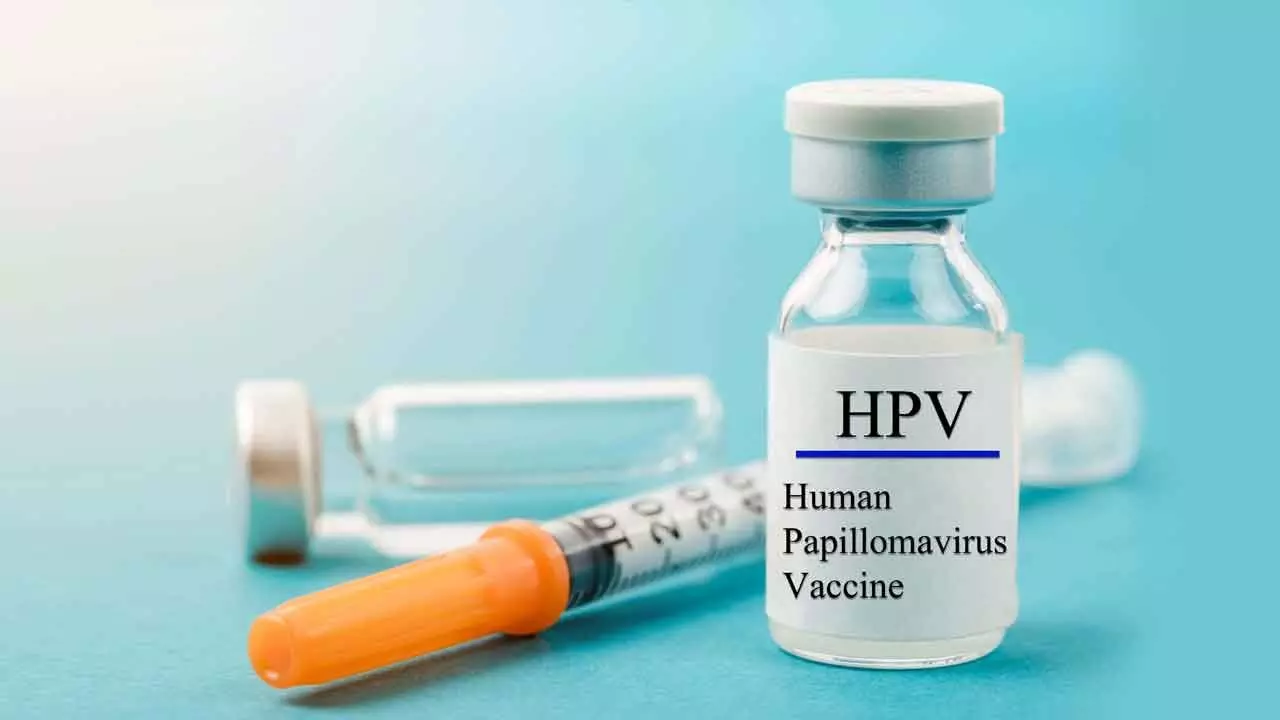HPV Vaccine: A Small Jab For A Big Change
Cervical cancer, a major health issue in India, is primarily caused by persistent HPV infections, with risk factors such as early sexual activity and poor hygiene increasing vulnerability
HPV Vaccine: A Small Jab For A Big Change

Preventative measures, including the HPV vaccine, are crucial in reducing cervical cancer rates. The vaccine is most effective when given to girls aged 9-14, before exposure to the virus. Public education, regular screenings, and healthcare initiatives are necessary to address the challenges posed by cervical cancer, especially in low-resource settings
One afternoon in a Telangana school, sixth-grader Meera attended a session about the HPV vaccine led by Auxiliary Nurse Midwife (ANM) Rajeshwari Devi and her team. Using colourful posters and simple explanations, the team educated students on how the vaccine prevents cervical cancer, caused by the Human Papillomavirus (HPV). The interactive session encouraged questions, making the information relatable. Excited, Meera shared what she learned with her mother, Sunita, who was unfamiliar with the vaccine and cervical cancer.
Concerned, Sunita visited the village clinic for more information. She asked Rajeshwari why the vaccine was necessary and if it was safe. Rajeshwari explained that cervical cancer is a significant health issue in India. She highlighted the vaccine’s effectiveness when given before virus exposure and reassured Sunita of its safety, citing global success in reducing cervical cancer cases. To address concerns, she provided a Telugu booklet with detailed information.Reassured, Sunita encouraged Meera to get vaccinated. The next day, Meera confidently joined her classmates to receive the vaccine. Rajeshwari praised her courage, provided a card for her second dose, and reminded the students to complete the schedule.
Risk factors of cervical cancer
Cervical cancer is the second commonest cancer mostly affecting middle aged women primarily caused by persistent infection with high-risk types of Human Papilloma viruses transmitted through sexual contact. Certain factors significantly increase vulnerability, including early sexual activity, multiple sexual partners, poor genital hygiene, smoking, weak immunity status etc, exacerbate the risk by impairing the immune system's ability to combat HPV infections effectively.
The lack of routine cancer screening, such as Pap smears or HPV tests, further contributes to late diagnosis and poor outcomes due to cervical cancer especially in rural and underserved areas, limited access to healthcare, cultural taboos, and misinformation about sexual health which prevent women from seeking preventive care. Financial constraints and fear of stigma also deter many from accessing essential services.
Cervical cancer prevention
Cervical cancer prevention strategies are uniquely strengthened by the introduction of HPV vaccination of adolescents with prevention efforts also focusing on education and regular screenings of women above 24-30 years age. The HPV vaccine is highly effective in preventing infections from high-risk HPV strains and is recommended for girls aged 9–14 before exposure to the virus. This is safe and effective measure adopted in the national programs of around 110 countries.
Cervical cancer disproportionately affects women in low-resource settings, where awareness and preventive measures are often lacking. This highlights the urgent need for targeted education and healthcare initiatives. Awareness campaigns, like the one Meera attended, play a crucial role in dispelling myths, addressing fears, and encouraging families to protect their children from cervical cancer.
Regular screenings, such as Pap smears and HPV tests, are vital for detecting precancerous changes early. Early detection enables timely treatment, significantly improving survival rates and reducing mortality. Health workers, NGOs, and local leaders are pivotal in bridging gaps by providing resources, organizing screening camps, and ensuring accessible healthcare services. Consequently, cervical cancer disproportionately affects women in low-resource settings, where awareness and preventive measures are often lacking. This highlights the urgent need for targeted education and healthcare initiatives.
To combat cervical cancer effectively, a multifaceted approach is required. Public education must challenge harmful taboos and empower women to prioritize their health. By fostering awareness, building trust in vaccines, and improving access to screenings and treatments, communities can reduce the burden of cervical cancer and secure a healthier future for all.
(The author is Director of Oncology Research and Education at PRASHO)

